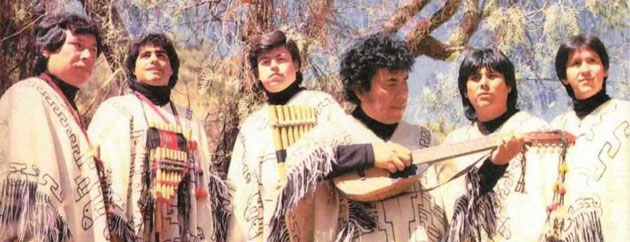
“Llorando Se Fue:” The Never-Ending Melody Heard Round the World
19 January, 2012It seems to be happening more and more every time I turn on the radio: the latest pop single begins to play, a passionate voice sings a catchy melody over electronic noises and beats, and my voice unashamedly joins in on what my ears are hearing. Yet as I hum along, I can’t help but realise that this “latest” hit is nothing fresh nor new at all — instead, it’s a melody from another popular song that had preceded it.
Take for example some recent hits, like American singer Jason Derula’s song, “Don’t Wanna Go Home,” which, if you can’t tell from the title, takes its chorus from the Harry Belafonte classic, “Day-O.” Likewise is rapper Flo-Rida’s single, “Spin Me Right Round,” similarly extracting the title and chorus of the eighties hit “You Spin Me Round,” by Dead or Alive. In each contemporary version, the main hook is absolutely and unerringly the same as the song that had come before it, save a few changes made in the lyrics for commercial appeal (and probably copyright infringement).
There are even instances in which the same classic melody from an older song appears on a number of recent singles—listen to reggaeton singer Don Omar’s “Taboo,” Jennifer Lopez’s “On the Floor,” or “Ven a Bailar,” and reggaeton/rap duo Wisin y Yandel’s “Pan Pan.” In each song — the former two released last year and the latter two in 2006 — there is the same exact note progression in the refrain, coming from the song “Llorando Se Fue,” by Bolivian folk group Los Kjarkas. And though Don Omar, Jennifer Lopez, and Wisin y Yandel have undoubtedly found success through the song, the interpretation of Los Kjarkas’ tune is a tale already spun many times over; in fact, this particular melody, as well as this song, has been covered a multitude of times over the years.
Los Kjarkas’ original version of the song was recorded and released in 1981 on their album Canto a La Mujer de Mi Pueblo. The group performed it in the Afro-Bolivian style of saya, a slow and lamenting rhythm with African origin. Though the saya style, and the title of the song — which translates to “Crying He/She Left” — connotes a somewhat melancholy tone, “Llorando Se Fue” is nonetheless a danceable ballad, as the leading notes of the panflute encourage one’s feet to move. And obviously, this melody has proven itself as such time and time again. Los Kjarkas saw the potential of the song’s catchy hooks, and in 1990, they authorised the song to be translated into 42 different languages. When they recorded the music video for the song, the band actually made a bilingual version, in which they sing half of the song in Spanish, and the other half in Japanese.
Nevertheless, the influx of the song’s popularity did not remain solely in the hands of Los Kjarkas. Throughout the 80s and 90s, “Llorando Se Fue” had a flurry of versions recorded as its fame grew throughout Latin America. Beginning its popularity south of Bolivia, the song was put in a more catchy state via accordion by Peruvian band Cuarteto Continental in 1984. Following suit in the accordion-led style, Puerto Rican singer Wilkins did his own version, as well as Brazilian singer Márcia Ferreira (video above), who translated the song to “Chorando Se Foi” in 1986. French group Kaoma again performed the same Portuguese version in 1989, which they entitled “Lambada” (unfortunately, this was an unauthorised translation, and Kaoma suffered a lawsuit).
http://www.youtube.com/watch?v=i8mz9uOvFQA
More recently, as electronic synthesisers and beats have spread from clubs onto the radio stations, the tune of “Llorando Se Fue” or “Lambada” has continued to remain a strong refrain for many pop artists, not only in Latin America, but in the rest of the world. As mentioned, the melody appears in hits by Don Omar (video below) and Wisin y Yandel, both Puerto Rican, and American singer Jennifer Lopez, also of Puerto Rican heritage. It even appears in more electronica-associated music in Europe, like French DJ Bob Sinclair’s song, “Give Me Some More.” Autonomously, all of these songs have their own distinctive perks and niches, but Los Kjarkas’ classic still remains strong, and noticeable in each.
This repetition of song and melody has its positive and negative aspects, of course. Coming from an artistic perspective, the integrity is in question, for none of the songs following Los Kjarkas original version are of true originality; they are merely a regurgitation of an already successful hit. Yet this could also be a sign of respect and admiration to Los Kjarkas: because the group popularised such an addictive melody, it is as if those artists who sang the same refrain were paying homage to the success of the Bolivian folk group. In the end, regardless of our opinion, we cannot help but hum along to these songs, possibly at the same time as thousands across the world are humming the same exact notes as well.
And to finish, here is that classic Los Kjarkas melody for you to enjoy:
http://www.youtube.com/watch?v=mT4T5GyGqRQ
Follow Sounds and Colours: Facebook / Twitter / Instagram / Mixcloud / Soundcloud / Bandcamp
Subscribe to the Sounds and Colours Newsletter for regular updates, news and competitions bringing the best of Latin American culture direct to your Inbox.

